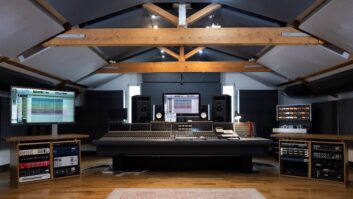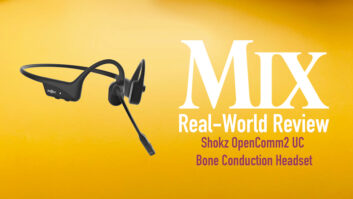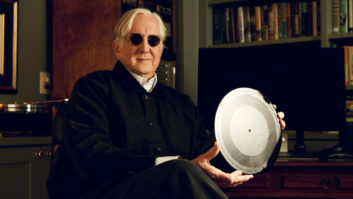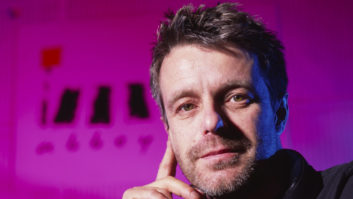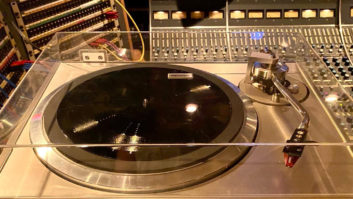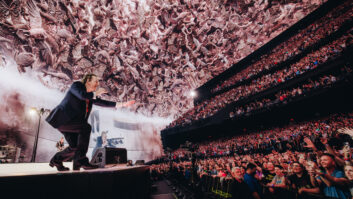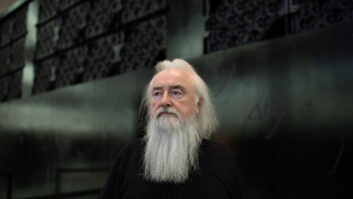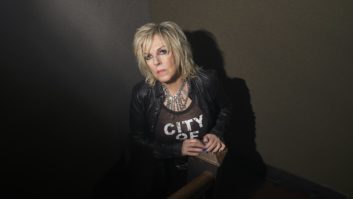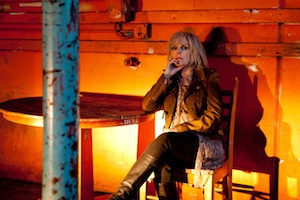
Lucinda Williams first visited David Bianco’s North Hollywood Studio, Dave’s Room, in December 2012. Bianco had agreed to donate studio time for a benefit album to assist Replacements guitarist Slim Dunlap, who had suffered a stroke earlier that year. The session was part of New West Records’ Songs for Slim project, and featured performances by Jakob Dylan, Steve Earle, Joe Henry and John Doe, as well as Williams, backed by a band of creative and like-minded musicians.
“Lucinda came in for the benefit, and she really took to the studio,” recalls Bianco, who has also engineered Number One albums for Bob Dylan, Mick Jagger, Big Head Todd & the Monsters and others. “Her husband, Tom [Overby], pulled me aside and said, ‘We’ve got to do some records, and Lu seems really comfortable here. We’d like to come back.’”
Williams returned the following October to make a double album, Down Where the Spirit Meets the Bone, with co-producers Overby and Greg Leisz—who also contributed his guitar brilliance to the project—and a rhythm section comprising the band Jack Shit (guitarist Val McCallum, drummer Pete Thomas and bassist Davey Faragher). Sessions were wedged in between tour dates, with guest musicians including guitarist Bill Frisell, keyboardist Ian McLagan, Jakob Dylan and more joining on select songs.
“The song ‘It’s Gonna Rain’ was the only song we did with [Williams’ longtime] drummer Butch Norton and bass player David Sutton as the rhythm section, with Bill Frisell and Greg on guitars and Jakob doing harmony vocals,” Bianco explains. “But there’s a whole other album in the can with Butch, David, Greg and Bill that is planned to be released next year.”
Whatever the lineup, Bianco captured the group live in Dave’s Room, where’s he’s been an owner/operator since 2006. “My studio used to be called Mama Jo’s, and it was purpose-built from the ground up to be a studio around 1970,” he says. “Vincent van Haaff designed the control room, and the owner, [producer/engineer] Freddie Piro, wanted him to model it after Larrabee Studio B. I had done a lot of work at Larrabee, so when I walked in, it was like déjà vu.”
When Bianco moved his Pro Tools HDX system and his collection of outboard gear and mics into the studio, it was four years’ empty and the worse for no wear. He recalls finding creative ways to bring the rooms back up to par: “I bartered with studio time,” he says. “I recorded a bass player who could lay flooring. I had a plumber-drummer.”
Luckily, the excellent bones and lines of the studio were still intact. The recording spaces include a live drum room flanked by four iso rooms of varying acoustics and sizes, which allowed Williams and band to record live, yet keep a pure signal on each piece.
The musicians and producers arranged Williams’ poetic Americana tracks in the studio, working off of her homemade demos. “I had Lu in a large vocal booth, and Ian McLagan in the keyboard room, and we had the guitar amps sequestered off in different booths, so most everybody was out in the room playing and had great sightlines to each other.”
Bianco captured Williams’ sultry voice with a Mojave MA-300 microphone, through a preamp in his Neve Sidecar, into a UREI LA4A limiter. “I have an old EMT 140 plate that Herb Alpert cherry-picked out of A&M Studios before he left,” Bianco says. “She loved that reverb and a little bit of slap delay.”
Likewise on all of the instruments, Bianco mainly employed his go-to method of pairing carefully chosen mics with vintage (or vintage-style) analog pre’s and compression, straight into Pro Tools.
“The idea is to get the best of the analog and digital worlds, so I have my Neve Sidecar and Quad 8 and API preamps; those form the bulk of my warm analog elements, along with some really nice old compressors—1176s and LA-2As, dbx 160s and so forth. But I also have some modern pre’s that I like to mix it up with: Great River, Phoenix Audio, SSL and Digi pre’s. For example, I use the Neve for nice, warm, big drum sounds, but for the clarity I like for overheads, I would go for a Great River or something else.”
Bianco mixed the record in Dave’s Room, as well, with final tweak comments from Overby, Leisz and the artist herself. “I’d already provided Lucinda with rough mixes that she really loved,” Bianco says. “Most of what made the songs really came from the great interaction between the musicians playing off each other in the studio—the stuff that happens when you get everyone into a room and finally hear everything in ‘living color.’”
